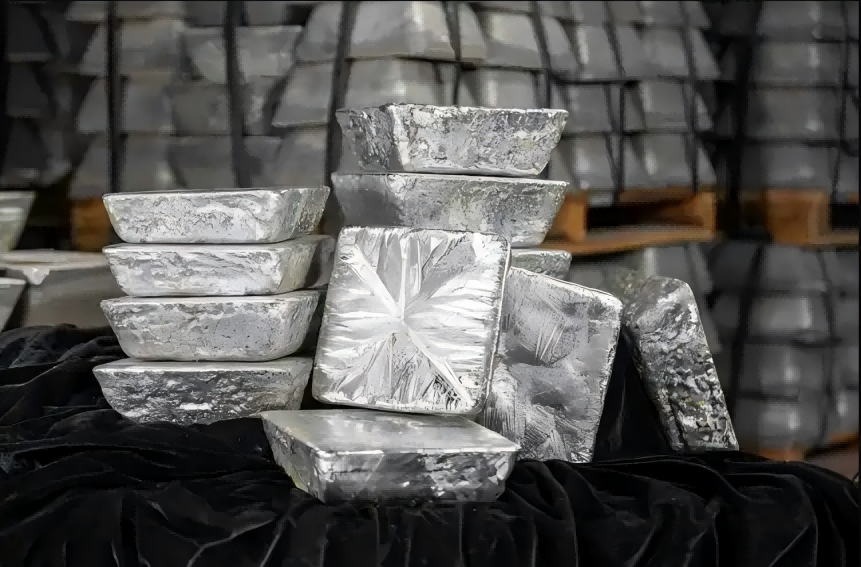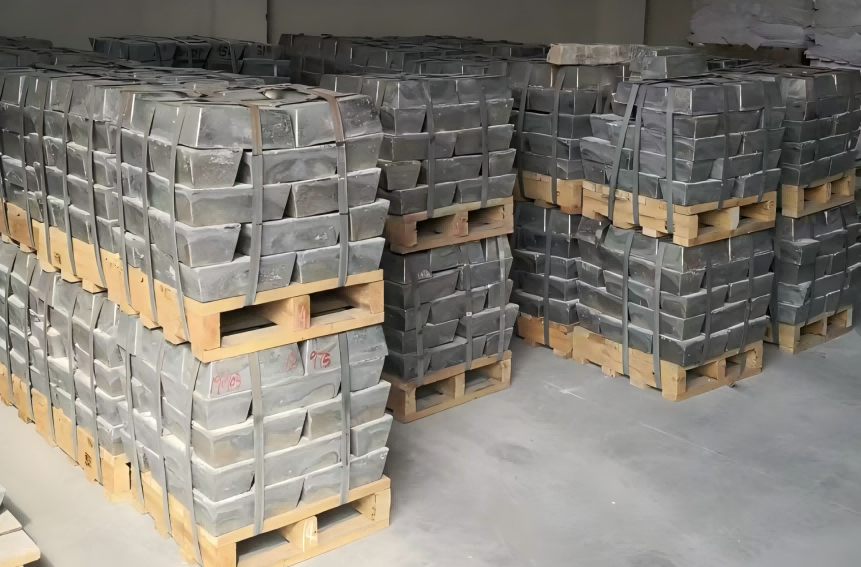
Element symbol: Sb
Atomic weight: 121.75(3)
English name: Stibium; Antimony
Appearance: Silvery white solid.
Packaging: Antimony ingot weighs about 25 kg per ingot, packed in wooden boxes, net weight of each box is 1000 kg, or can be packed according to user requirements.
Physicochemical properties: Antimony is a non-ferrous heavy metal, a brittle and shiny silvery white solid. There are two allotropes, the yellow variant is stable at minus 90 degrees, and the metallic variant is the stable form of antimony. Melting point 630 degrees, density 6.62 g/cm3, poor thermal conductivity
The following is a re - introduction to antimony ingots:
Antimony ingot is a kind of metal ingot, with the main component being metallic antimony. It usually takes on a specific shape, generally a truncated pyramid hexahedron. The specified ingot weight should not exceed 25 kilograms. Its surface is smooth, free of slag, and has star - shaped patterns. Its elemental symbol is Sb, atomic number is 51, and relative atomic mass is 121.75.
Physical Properties: It has a silvery - white appearance, and its cross - section shows a purplish - blue metallic luster. It is brittle and easy to break, without ductility, and can be ground into powder. It is a poor conductor of heat and electricity, with a density of 6.684 g/cm³, a melting point of 630.74 °C, and a boiling point of 1750 °C.
Chemical Properties: Under normal temperature conditions, it is not easily oxidized. However, when heated or under specific conditions, it will react chemically with elements such as oxygen, sulfur, and halogens. It is insoluble in water and relatively stable in dilute hydrochloric acid and concentrated hydrofluoric acid.
Pyrometallurgy: Currently, pyrometallurgy is still the main method for producing antimony ingots. Pyrometallurgy can be divided into direct smelting method, volatilization roasting (smelting) - reduction smelting and refining method. In China, the methods of volatilization roasting in a shaft furnace or volatilization smelting in a blast furnace are mainly used to first produce antimony trioxide. Then, in a reverberatory furnace, antimony trioxide is reduced to crude antimony through reduction smelting. Finally, impurities are removed through refining to obtain refined antimony.
Hydrometallurgy: Chemical reactions are used to dissolve antimony from antimony ores. Subsequently, through a series of complex separation and purification steps, antimony ingots are finally obtained.
Alloy Manufacturing: It is an important hardening agent for alloys, used in the manufacture of various alloys such as battery plates, lead - antimony alloys, and antimony bronze, which can effectively increase the hardness and strength of the alloys.
Flame - Retardant Materials: Compounds of antimony have good flame - retardant properties, so they are widely used in various products such as plastics, rubbers, and textiles to improve the fire - proof performance of these products.
Electronics Industry: It can be used as a semiconductor material, stably doped into silicon crystals to change the electrical properties of silicon crystals, and is then used in the manufacture of various electronic devices such as transistors, integrated circuits, and solar panels.
Chemical Industry: It can be used as a catalyst for the synthesis of polymers such as acetic acid, polyamides, and polyesters. At the same time, it is also used in the production of various chemicals such as vinyl chloride, vulcanized rubber, and phosphates.
Price Trend: Since 2025, the contradiction between supply and demand in the global antimony market has been intensifying. As of March 2025, the quoted price of Chinese antimony ingots exceeded 170,000 yuan per ton, reaching a new historical high.
Supply and Demand Situation: In terms of supply, global antimony resources are relatively scarce. As the largest antimony ore producer, China's supply capacity has declined in recent years due to reasons such as environmental protection - related production restrictions and tightened export policies. In terms of demand, antimony used in photovoltaic glass fining agents accounts for 30% of the global demand. The rush - installation boom in the photovoltaic industry in 2025 has driven the growth of antimony demand. In addition, the demand for antimony in fields such as flame - retardants and the military industry has also remained stable.



